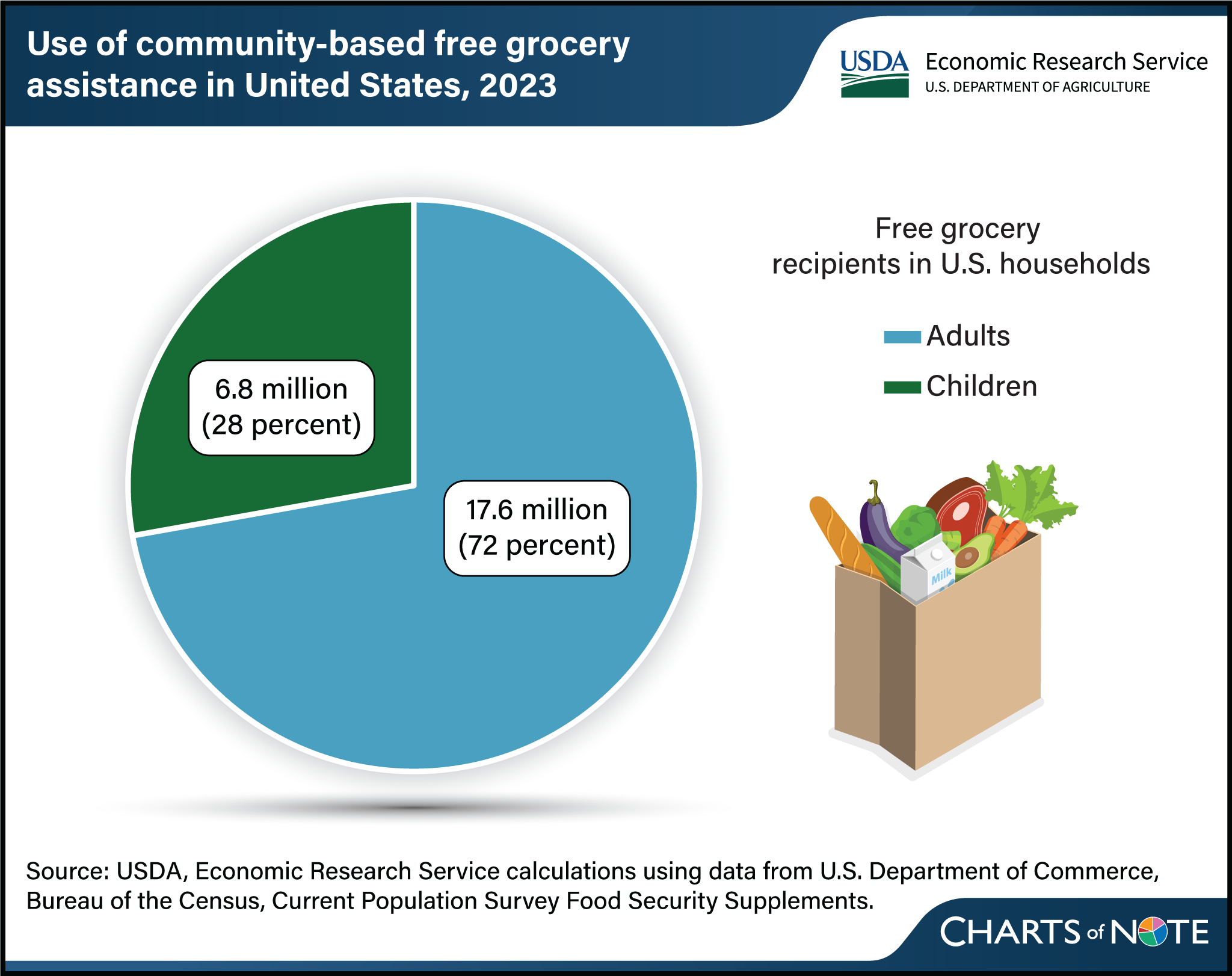Over a quarter of all beneficiaries of community-based free grocery assistance in 2023 were children
- by Shellye Suttles
- 9/17/2025

Community food and nutrition assistance programs provide a complementary safety net to Federal food and nutrition programs like the Supplemental Nutrition Assistance Program (SNAP), particularly for food insecure and low-income households with children. In 2023, 9.3 million households composed of 24.4 million individuals received free grocery assistance from U.S. community organizations. Most food distributed by these organizations comes from community-based resources, but USDA supplements these resources through The Emergency Food Assistance Program (TEFAP), which supplied more than 1.5 billion pounds of USDA Foods in fiscal year 2023. USDA, Economic Research Service (ERS) studies the use of two types of community-based nutrition assistance programs—free groceries and free meals—through the Current Population Survey Food Security Supplement. This survey indicates that among the households that received free groceries in 2023, 28 percent (6.8 million) of household members were children under 18 years old. The remaining 17.6 million recipients of free groceries were adults. Additional data on the use of community food and nutrition assistance by demographic categories, including children, are available in the ERS report Statistical Supplement to Household Food Security in the United States in 2023, published in September 2024. The Household Food Security in the United States in 2024 report and corresponding statistical supplement with 2024 data will be released on October 22, 2025.

